


US Army TC-5 Zeppelin Airship Program 1933 Scott Field IL Real Photograph Lot 2

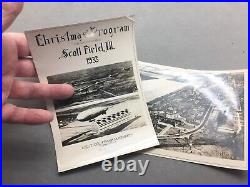
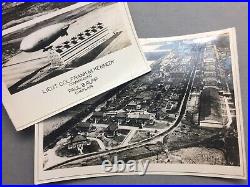


US Army TC-5 Zeppelin Airship Program 1933 Scott Field IL Real Photograph Lot 2. This is a lot of two real photographs for an airship program at Scott Field, Illinois in 1933. The photo with airship reads, ” Christmas Program Scott Field, IL 1933″ and, Lieut Col. Kennedy Commanding, Paul B. Look closely on zeppelin and you can read “TC-5″. This is an Army airship and it is flying over Scott Field hanger. A line of bi-wing planes is flying over the airship! I believe the planes were used to wrangle the zeppelin. The other photo came with the Program cover photo and has the same boarder and was probably part of the program. It shows part of Scott Field and hanger building. The TC-5 was designed for coastal patrol duty and was the first of its kind to land at East Boston Airport. This is a RARE item. These are real photos… My photos are of the actual item you are getting. See our store for other interesting Zeppelin photo item at Lambert Field. Book packages less than 5oz will be sent First Class. Items must be sent back within 5 days after return request. You may qualify for a cheaper rate. Thank you for looking.


Rare Vintage 1920’s Real Studio Photograph of Lt James Jimmy Doolittle Framed
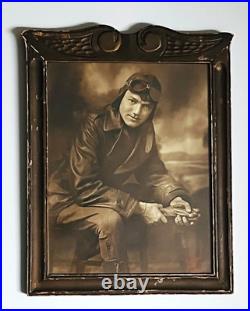
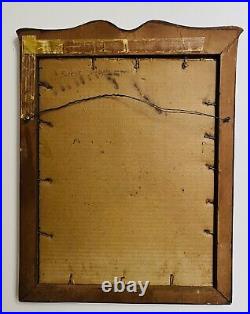
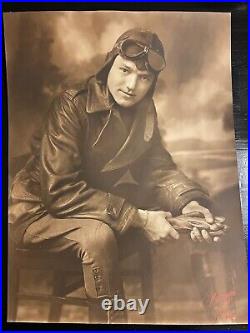


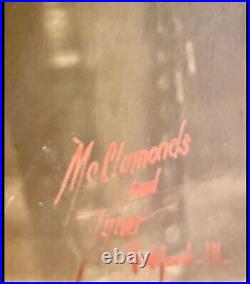

This is a Rare 1920’s Real Studio Photograph of Lt James “JImmy” Doolittle In original Wooden Frame. This photograph has been certified to be original. The frame shows some wear, but is original as well. The Photography studio was located in Rockville, IL. The photo measures 10″ X 13″ and Framed 12 1/2 X 16 1/2. This would make a great addition to any military collection.


Early Navy Ship Real Photo Postcards? 43
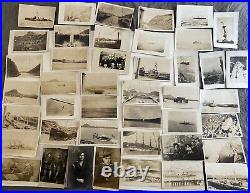
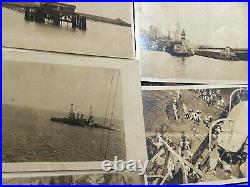

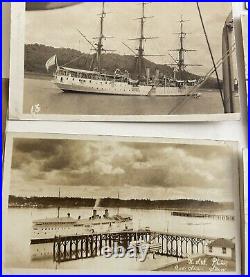
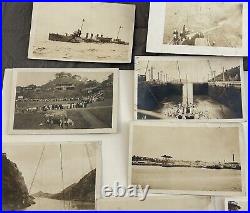
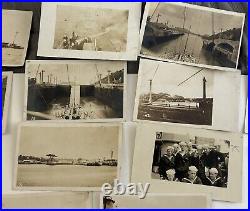
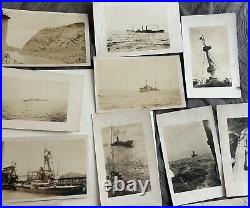
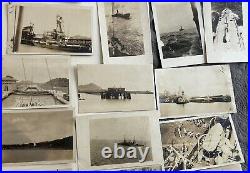
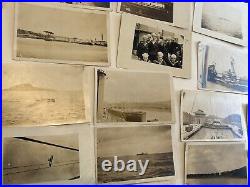
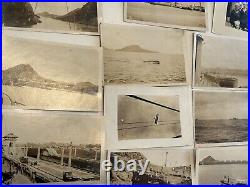
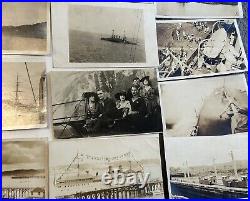

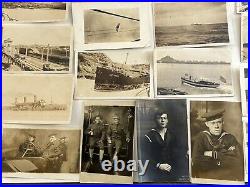
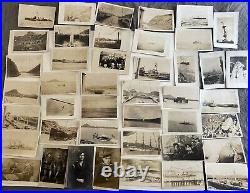
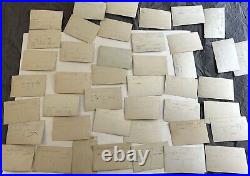

Very clear there is some wear so check the photos. They are part of the description and show condition.


US Navy Airship Shenandoah ZR-1 Zeppelin Lambert Field 1923 Real Photo 7 READ
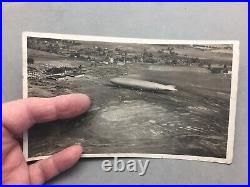

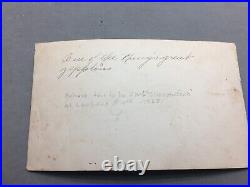

US Navy Airship Shenandoah ZR-1 Zeppelin Lambert Field 1923 Real Photo 7 READ. This is a real photo of US Navy Airship ZR-1 Shenandoah at Lambert Field (Missouri) 1923 that measures 7 1/4″ x 4 1/4″. The back has writing, One of the Navy’s Great Zeppelins… Believe this to be ZR-1 Shenandoah ZR-1 at Lambert Field 1923. 1925 due to structural failure while in line squalls in Caldwell, Ohio killing half the crew (14 men). It made first crossing of North America by airship. It’s length was 680 ft and height 93 feet 2. It was helium filled and when it crashed it broke in two. This is a RARE real photo of a Zeppelin that was only around a couple years. Look closely at building in background which help id Lambert Field and also see the tents out there. The quality of photo is great. I assume this was taken by Navy in plane and not a snapshot due to height and view…. And this was 1923! My photos are of the actual item you are getting. See our store for other interesting Zeppelin photo of US Army TC-5 Airship at Scott Field 1933. Book packages less than 5oz will be sent First Class. Items must be sent back within 5 days after return request. You may qualify for a cheaper rate. Thank you for looking.


A. E. F. American Expeditionary Force Siberia MILITARY REAL PHOTO POW RUSSIA Texas
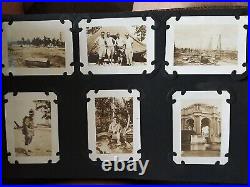
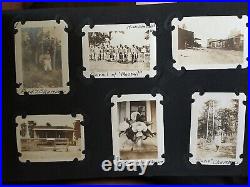
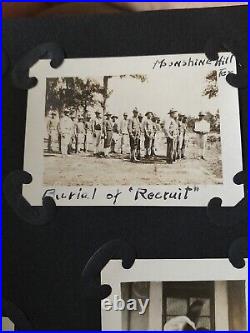
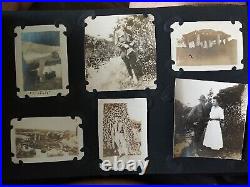
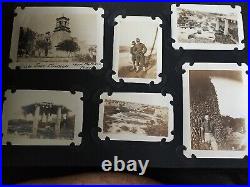
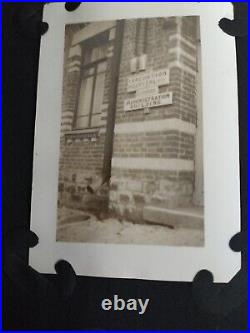
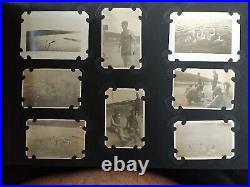
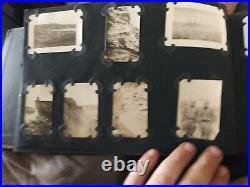



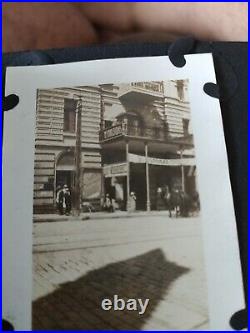

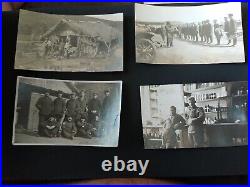
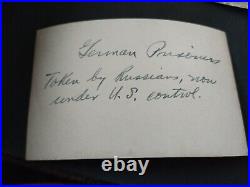

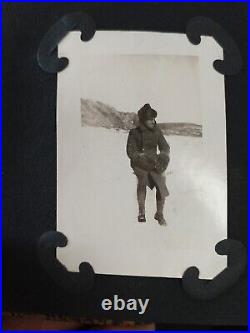
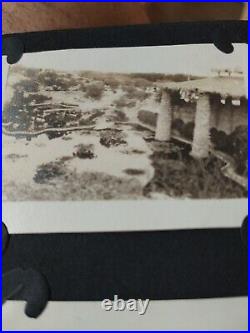
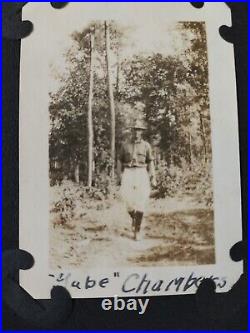
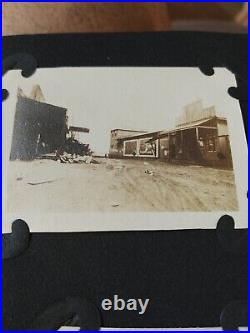
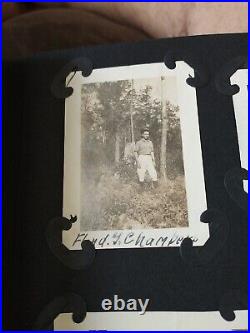
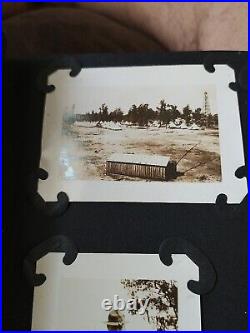
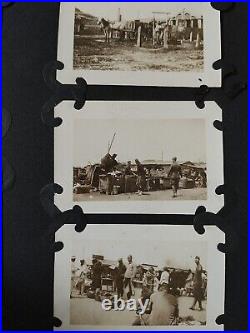


Some have notes on back. Please see pictures for condition.

1920’s US Sailor’s Photo Album 109 Real Photo PC’s Panama Canal, Hawaii, Ships
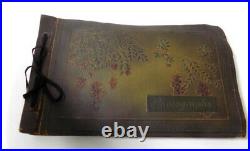
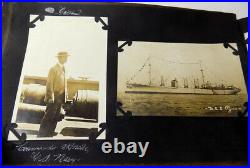
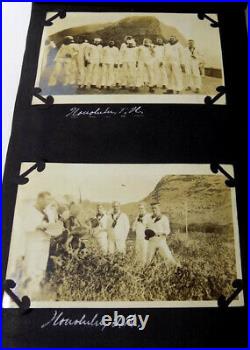
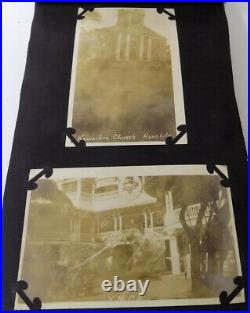

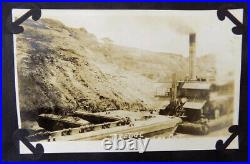
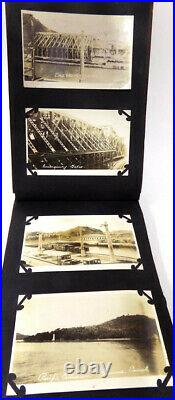
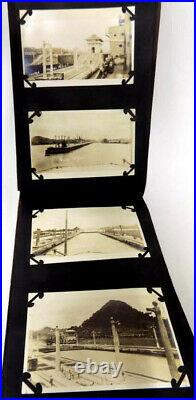
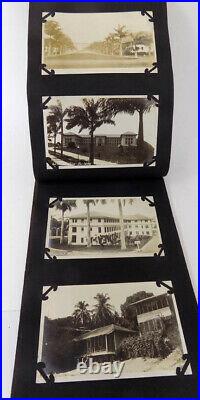
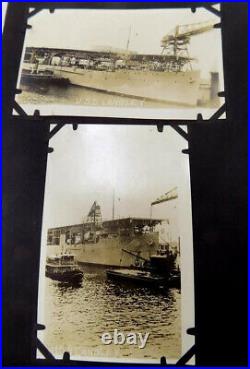
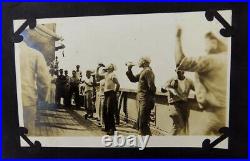
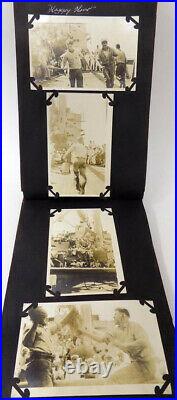

This is a US sailor’s photo album with 109 real photo postcards. The first 2 photos are of Captain F. Naile and the USS Pyro. I learned that a Frederick Raymond Naile served on the USS Pyro from 1922 until 1924. The postcards all have the Azo stampbox on the back which dates from 1918 to 1930. A few of the photos have brief descriptions written under them, and some have handwritten titles that are part of the photo. There is no name for the sailor who compiled the album or details of his service. Some of the cards may have been commercially published, but many looks like they were made from original photos taken by the sailor. There are also 2 cards from Alcatraz, one of the Philadelphia Naval Yard, the Chapel at West Point and an observation balloon. I’ve taken out of the album and listed separately album pages with photos of the 1923 Honda Point California disaster where 7 Navy destroyers were wrecked and some photos and rppc’s of San Diego. She was decommissioned in 1924 and recommissioned in 1939 – she was one of the ships which survived the attack at Pearl Harbor. There are 2 other photos identified by the sailor as taken on the Pyro – one of the deck, and a very faded photo of the 2 dog mascots. The Panama Canal cards include the Gatun Locks, Emergency Locks, Pedro Miguel, Miraflores Gates, Culebra Cut and the Pacific entrance. Other Panama cards include the Taboga Island, Pearl Islands, El Vigia Village, ruins left by pirate Henry Morgan in 1671, Canal Administration building, hospital and the Leper Colony. I’m not sure if the sailor was stationed in Panama or if he just went through the canal going from the West to East Coast. The cards vary in quality – some are very sharp and clear, a few are blurry, and others very pale. The black paper tabs have stuck to the cards. I was able to remove them from several cards that I took out of the album, but it’s a tedious job that left slight traces of black behind. Several of the cards are apart from the page. The item “1920’s US Sailor’s Photo Album 109 Real Photo PC’s Panama Canal, Hawaii, Ships” is in sale since Saturday, March 23, 2019. This item is in the category “Collectibles\Militaria\1919-38\Original Period Items”. The seller is “forestseeker” and is located in Advance, North Carolina. This item can be shipped worldwide.
- Country/Region of Manufacture: United States
- Theme: Militaria
- Original/Reproduction: Original
- Time Period Manufactured: 1919-38


#11 Real McCoy’s 37J1 Zielinski Jacket S 42 (M) 1930s US Navy A-1
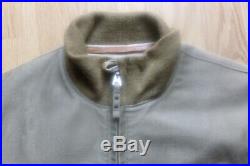
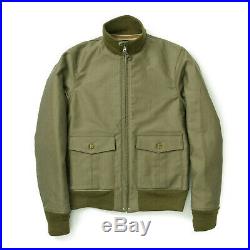
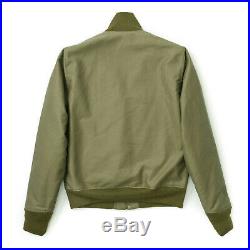
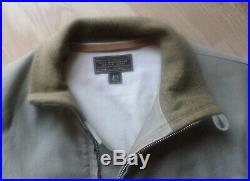




37JI USN REPRO JACKET. By The Real McCoy’s. Size Japan 42 = US Size 40. Slim fit USN 1930s repro jacket by the Real McCoy’s (Joe McCoy / 8Hour Union). The best repro on the market. Tagged size 42 but fits like 40 for the caucasian male. Not for beer bellys so PLEASE check measurements. Real color is like light green / khaki. Pics 1 and 2 are generic but detail pics are of the real jacket. Kind’a like pre B-10 jackets. Armpit to armpit : 51 cm / 20. Waist (above knits) : 49 cm / 19.25. Shoulders : 46 cm / 18.15. Back length (from bottom of collar to end of knits) : 65 cm / 25.5. Sleeves (including knits) : 69 cm / 27.15. Just need a bit of ironing. Will pack with great care. Have no worries about. A-1 Jacket, A-2 Jacket, ANJ-1 Jacket, B-10 Jacket, B-15 Jacket, G-1 Jacket, Boondockers, Flying Tigers, Jump boots, Munson boots, Paratroopers, Service shoes Type I, USAAF, US Army; US Marine Corps.. The item “#11 Real McCoy’s 37J1 Zielinski Jacket S 42 (M) 1930s US Navy A-1″ is in sale since Thursday, July 18, 2019. This item is in the category “Clothing, Shoes & Accessories\Men’s Clothing\Coats & Jackets”. The seller is “fatalitas!” and is located in Aubigny la Ronce. This item can be shipped worldwide.
- Model: 37J1
- Modified Item: No
- Country/Region of Manufacture: Japan
- Style: Bomber
- Sub-Style: 37J1 Jacket
- Material: Cotton
- Type: Jacket
- Color: Khaki
- Size (Men’s): 42
- Closure: Zipper
- Brand: The Real McCoy’s
- Lining: Not Applicable
- Warmth: Midweight
- Size Type: Slim Fit

102nd Observation Squadron 1920’s badge! ULTRA RARE, the REAL DEAL




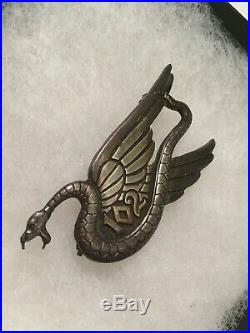
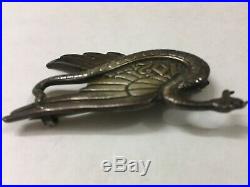
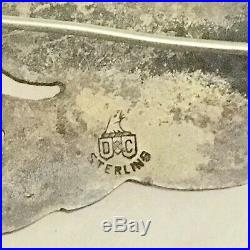

102nd Observation Squadron badge! ULTRA RARE, the REAL DEAL! 1920’s era highly sought after early aviation squadron insignia pin made in sterling silver by Dieges & Clust. Correct back pin alignment. Came from the collection of a noted collector and OMSA (winner will get this info). Original ones of these are very rare and don’t come out of collections often, don’t miss your chance for this one it could be years before another one is available. History: The 102nd Observation Squadron organized on March 22, 1921 under the command of Maj. Littauer as the 102nd Squadron, 27th Division Air service, New York National Guard. The unit was redesigned the 102nd Observation Squadron on January 23, 1923. This squadron can trace its history back to a group formed by aviation enthusiasts in the NY National Guard in April 1908. They became the 1st Aero Company on November 1,1915 and became the first National Guard unit in aviation and to be pressed into federal service on July 13, 1916 for use in the Mexican Punitive Expedition. When the United States entered World War I, all National Guard aviation units were dissolved. New York’s 1st Aero Company was no different and it was disbanded on May 23, 1917. The founder of the unit, Captain Raynall Cawthorne Bolling and almost all of the members of the unit left the National Guard to join the Army Signal Corps Reserve and in May 1917 founded the 1st Aero Reserve squadron. That unit was sent to France in August 1917 and designated 26th Aero Squadron. Its personnel and aircraft formed the basis for an aviation school and maintenance unit. After the war, a group of veteran pilots initiated the formation of an Aero Club, which became the 102nd. Keywords: Army Air Corps, Air Force, aviation, aero, acts, ace, rattlesnake, group, WW1, World War I, WWI, WWII, militaria, military, flying. The item “102nd Observation Squadron 1920’s badge! ULTRA RARE, the REAL DEAL” is in sale since Saturday, May 18, 2019. This item is in the category “Collectibles\Militaria\1919-38\Original Period Items”. The seller is “cedarstone” and is located in Wetumpka, Alabama. This item can be shipped worldwide.
- Country/Region of Manufacture: United States


RARE USMC MARINES YANGTZE SERVICE MEDAL NUMBERED Pre WW2 era Real Deal
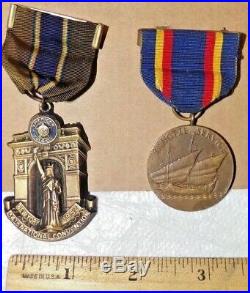
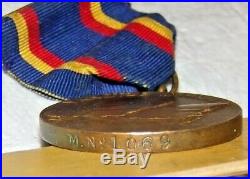
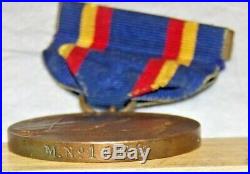


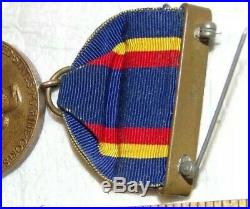
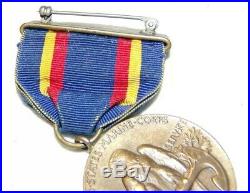
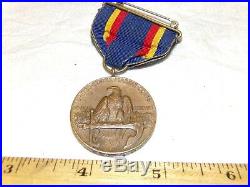
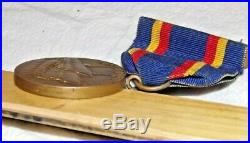
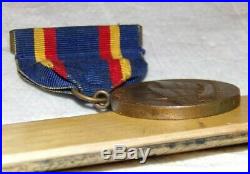
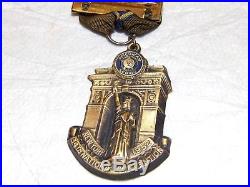
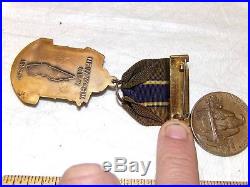

HERE IS A SUPER RARE NUMBERED M. NO 1069, US MARINE CORP ORIGINAL ISSUED YANGTZE SERVICE MEDAL There where very few of these awarded to Marines. It has the old clasp and ribbon and did not glow. Medal is in good shape for almost a 100 years old. Please look over and ask questions as we know this is a rare and valuable piece for any collector to have. Some folks just don’t appreciate history and preserving it for us collectors. With what little research I could do, all I could find was one m. 1052 was issued to a marine corp Colonel on who served on the USS HENDERSON AIRCRAFT SQUADRON in 1927. A list of the marines in the squadron would most likely help getting closer to the Marines name. Some more digging should come up with him. Expeditionary Detachment, Aircraft Squadrons, Third Brigade United States Marines, who were on board the USS Henderson at Shanghai, China, from 23 June 1927 to 27 June 1927. Yangtze Service Medal To commemorate the services performed by the personnel of the Navy and Marine Corps during the operations in the valley of the Yangtze River, China, in 1926 and 1927, and 1930 and 1932, a medal to be known as the “Yangtze Service Medal” will be issued to the officers and enlisted men who participated in those operations. The period for which these medals will be issued is from 3 September 1926 to 21 October 1927, and from 1 March 1930 to 31 December 1932, and any officer or enlisted man of the Navy or Marine Corps who served on shore at Shanghai or in the valley of the Yangtze River, China, with a landing force during these periods or part of such periods is entitled to this medal, as are the officers and enlisted men who were attached to the vessels mentioned in the following list between the dates appearing beside and below each vessel. No officer or enlisted man is entitled to more than one such medal. Navy Department General Order No. 205 of 28 April 1930; Source: 1953 U. The item “RARE USMC MARINES YANGTZE SERVICE MEDAL NUMBERED Pre WW2 era Real Deal” is in sale since Thursday, March 28, 2019. This item is in the category “Collectibles\Militaria\1919-38\Original Period Items”. The seller is “iowa18462010″ and is located in Slater, Iowa. This item can be shipped to United States, Canada, United Kingdom, Denmark, Romania, Slovakia, Bulgaria, Czech republic, Finland, Hungary, Latvia, Lithuania, Malta, Estonia, Australia, Greece, Portugal, Cyprus, Slovenia, Japan, China, Sweden, South Korea, Indonesia, Taiwan, Thailand, Belgium, France, Hong Kong, Ireland, Netherlands, Poland, Spain, Italy, Germany, Austria, Bahamas, Israel, Mexico, New Zealand, Philippines, Singapore, Switzerland, Norway, Saudi arabia, Ukraine, United arab emirates, Qatar, Kuwait, Bahrain, Croatia, Malaysia, Chile, Colombia, Costa rica, Panama, Trinidad and tobago, Guatemala, Honduras, Jamaica, Brunei darussalam, Iceland, Luxembourg, Paraguay, Uruguay.
- Country/Region of Manufacture: United States

1
2